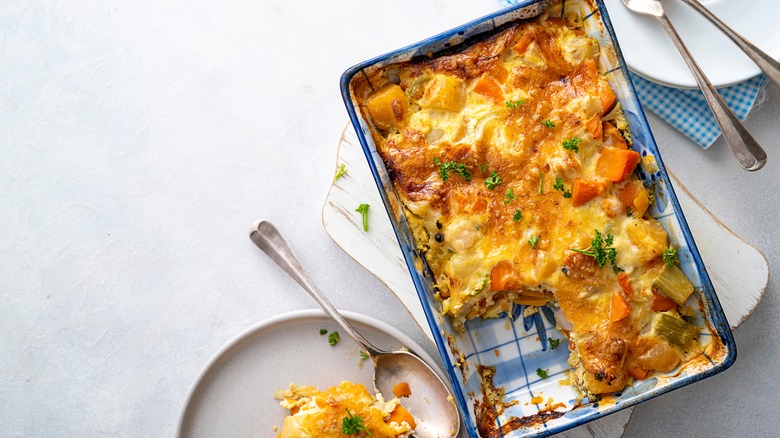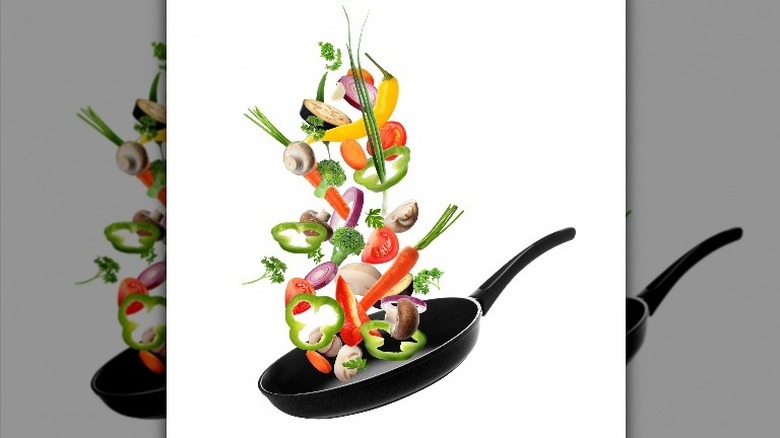The Important Vegetable Step You Need To Follow When Making Casseroles
A hearty casserole is a great way to enjoy many of your favorite foods all at once. Seriously, few other entrees allow you to savor the wholesome goodness of meat, carbs, veggies, and a generous helping of cheese in the same dish. That's not all — once you chuck your concoction in the oven, it pretty much cooks itself. That's an admirable quality in any meal.
While you've likely whipped up more than your share of mouth-watering casseroles over the years, there are probably a few things that you don't know about this comfort food. For instance, do you know the origins of the traditional green bean casserole? It turns out that this perennial favorite was the 1955 brainchild of Dorcas Reilly, an employee at Campbell's Soup's Home Economics department, now known as their Test Kitchen (via Campbell's website). If you've ever had trouble selecting the perfect baking dish, Ree Drummond recommends using a metal one in most cases. She does say, however, that glass is better for pasta-based casseroles. And, according to Google Trends, the favorite casseroles in 17 states are those based on "greens." Yes, America loves its broccoli and green bean-inspired creations (via Hits 96).
Now that you're up-to-speed on some casserole facts, it's time to answer a very important casserole-related preparation question. How on earth do stop your veggies from transforming your culinary masterpiece into a mushy, drippy mess?
Precooking watery veggies will keep your casserole firm
It's a well-known fact that moisture-laden vegetables love to ruin casseroles. After all, how else can they find pleasure in life? As the casserole's creator, however, it is your duty to take charge and show those watery greens (and other vegetables) who's boss. How can you halt these mush-making culprits in their tracks? It's easier than you think.
According to Allrecipes, the secret is to cook the extra moisture out of your veggies before putting them in your casserole. Make sure that frozen greens like spinach are completely thawed out and squeezed dry. Defrost corn, peas, and other small frozen nuggets in a colander. When it comes to juicy items like mushrooms or onions, cook the liquid out of them first. And when using sliced zucchini, salt their surfaces, let them dry out in a colander for a half hour, wash off the salt, and gently hand-dry them. MyRecipes points out that if you want to determine which veggies contain a high degree of moisture, you need to see if it "shrinks in size by more than half" when cooked. If it does, it's a potential threat to your casserole that needs to be dealt with accordingly.
Now that you know this simple veggie hack, you are equipped to make hearty and mush-free casseroles. Perhaps you'll be brave enough to tackle a totally vegetarian casserole that everyone will love and truly kick some mushroom and spinach butt.

